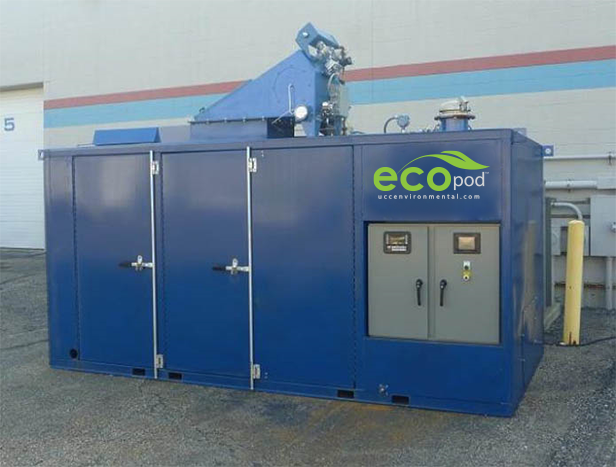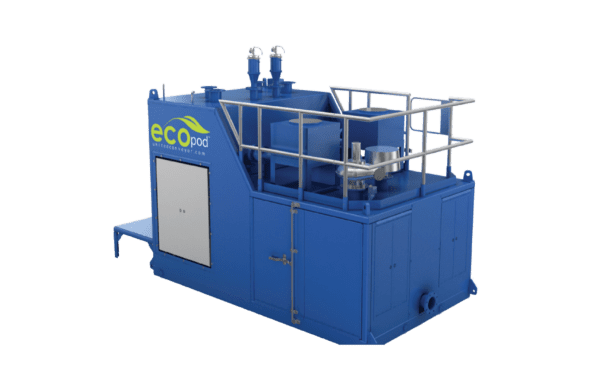
Stay Compliant with NESHAP Standards: Proven Solutions for Lime Manufacturers
The U.S. Environmental Protection Agency (EPA) has enacted its National Emission Standards for Hazardous Air Pollutants (NESHAP) to regulate emissions from lime manufacturing plants. These stringent standards target hazardous air pollutants (HAPs), including heavy metals, particulate matter, mercury, and hydrochloric acid, requiring facilities to implement advanced emission control systems, conduct regular testing, and maintain rigorous monitoring and reporting protocol.
Understanding Customer Challenges
Achieving and maintaining NESHAP compliance presents significant challenges for lime manufacturing facilities, from navigating evolving air quality regulations to optimizing emissions control technologies without disrupting operations. UCC Environmental understands these complexities and provides solutions that address:
Regulatory Uncertainty & Stringent Emission Limits: Ensuring compliance with evolving hazardous air pollutant (HAP) regulations, including strict limits on HCl, mercury, and particulate matter, while minimizing compliance risks.
Operational & Financial Efficiency: Implementing cost-effective emissions reduction strategies that maintain system performance while minimizing capital investments and ongoing operational expenses.
Retrofitting & Integration: Managing the complexities of upgrading existing systems with proven UCC DSI and ACI retrofit solutions backed by the largest industry reference list.
Long-Term Reliability: Delivering durable, proven air pollution control technologies designed for sustained performance and compliance.
Proven UCC Solutions
UCC Environmental has been the trusted partner for some of the largest lime manufacturers, delivering reliable emissions control solutions that meet NESHAP compliance requirements. Our advanced technologies efficiently reduce hydrochloric acid (HCl), mercury, and particulate emissions, ensuring regulatory adherence while maintaining operational performance.
With a proven track record of successful implementations, UCC provides industry-leading solutions tailored to the unique challenges of lime manufacturing facilities.
Best Available Technology (BAT): Leveraging cutting-edge emissions control solutions to maximize pollutant reduction, ensuring compliance with the strictest regulatory standards while optimizing operational efficiency.
Industry-Leading Experience: UCC has the largest reference list for Dry Sorbent Injection (DSI) and Activated Carbon Injection (ACI) systems in the industry and has completed more retrofits than any other provider.
Advanced Dry Sorbent Injection (DSI): Reduces HCl and other pollutants with optimized sorbent use, supporting compliance with air quality regulations.
Mercury Emissions Management: Innovative systems ensure safe, cost-effective mercury removal while meeting stringent environmental standards.
Integrated Engineering & Compliance Support: From predictive modeling and feasibility studies to on-site testing, we provide solutions tailored to facility needs.
Our solutions go beyond compliance—we focus on cost-effective emissions reduction, helping facilities navigate complex regulatory requirements while maintaining reliable operations.
UCC Technical Solution
Ecopod™
Modular Dry Sorbent Injection System For Acid Gas Control in Lime Kilns
The ecopod is a compact, modular unit designed to provide cost-effective hydrated lime injection. Its stand-alone design can accommodate a legged silo or external hopper for sorbent storage. The ecopod incorporates both the sorbent metering and conveying equipment. A six-door configuration allows for easy and safe access to all equipment and instrumentation. Its small footprint allows for installation on existing slabs or platforms.

Benefits
• Compact design for smaller footprint and easy installation
• Pre-piped and pre-wired module eliminates need for most of the field installation, offering substantial construction savings.
*A typical ecopod installation versus a traditional Dry Sorbent Injection System installation can generate a savings of $250 – $300k.
Operational Savings
• Highest removal efficiency for short residence time
• UCC’s patented COBRA™ Lances are considered best-in-class for pollutant removal in short residence-time configurations like those typically found in hydrated lime kiln exhaust ductwork. Their innovative design reduces sorbent usage by up to 30% providing significant cost savings over the life of the system. For lime kilns in particular, this allows sites to consume less hydrated lime for control and allow them to sell more product.
• Design Flexibility
• Flexible system design can accommodate multiple feed trains to control multiple emission points, such as multiple kilns on one site, and/or allow redundancy, if required.
• In-house Computational Fluid Dynamic (CFD) modeling of plant duct flows to predict and enhance sorbent distribution in flue gas, thereby maximizing performance and minimizing sorbent usage.
• Variable operation to meet site-specific injection rates
* Based on typical lime kiln applications with an injection rate of 100 lbs/hr, the expected sorbent savings can range from 100,000 to 250,000 lbs/year per kiln.
Maintenance Savings
• Automated system is safer and less labor intensive than bulk bag unloaders, requiring less operational and maintenance support
• The standard ecopod system design allows for parts to be shared across the entire fleet, enhancing cost-efficiency, reducing inventory requirements and making it an economical solution.
*Traditional systems can require constant maintenance for three, eight-hour shifts per day, versus only occasional maintenance for an ecopod, providing a typical labor savings of 5,000 hours per year or more.
UCC REFERENCES
UCC’s expertise allows us to navigate the complexities involved and provide customers with practical strategies that ensure compliance, operational efficiency, and cost effectiveness. Our extensive DSI reference list includes over 125 full-scale on-site tests, 175 permanent installations, and over 65 retrofitted competitor systems. UCC’s DSI systems have the well-earned reputation of the most reliable systems in the industry.

Installation Savings

Operational Savings

Maintenance Savings
Navigating the Compliance Timeline with Confidence
NESHAP compliance deadlines are strict, and missing them can have serious consequences. UCC’s team of environmental experts ensures you stay on track:
Custom Compliance Roadmaps: Tailored strategies for achieving regulatory adherence.
Predictive Modeling and Testing: Validates removal rates, sorbent consumption, and plant integration.
Turnkey Implementation Support: From design to installation, we streamline the process for your facility.
Partner with UCC to meet compliance deadlines, safeguard your operations, and reinforce your commitment to environmental stewardship. Let us handle the complexities of NESHAP compliance, so you can focus on running a successful lime manufacturing business.
How can we help?
Our team of experts are happy to help answer any questions you have about UCC’s air solutions.

